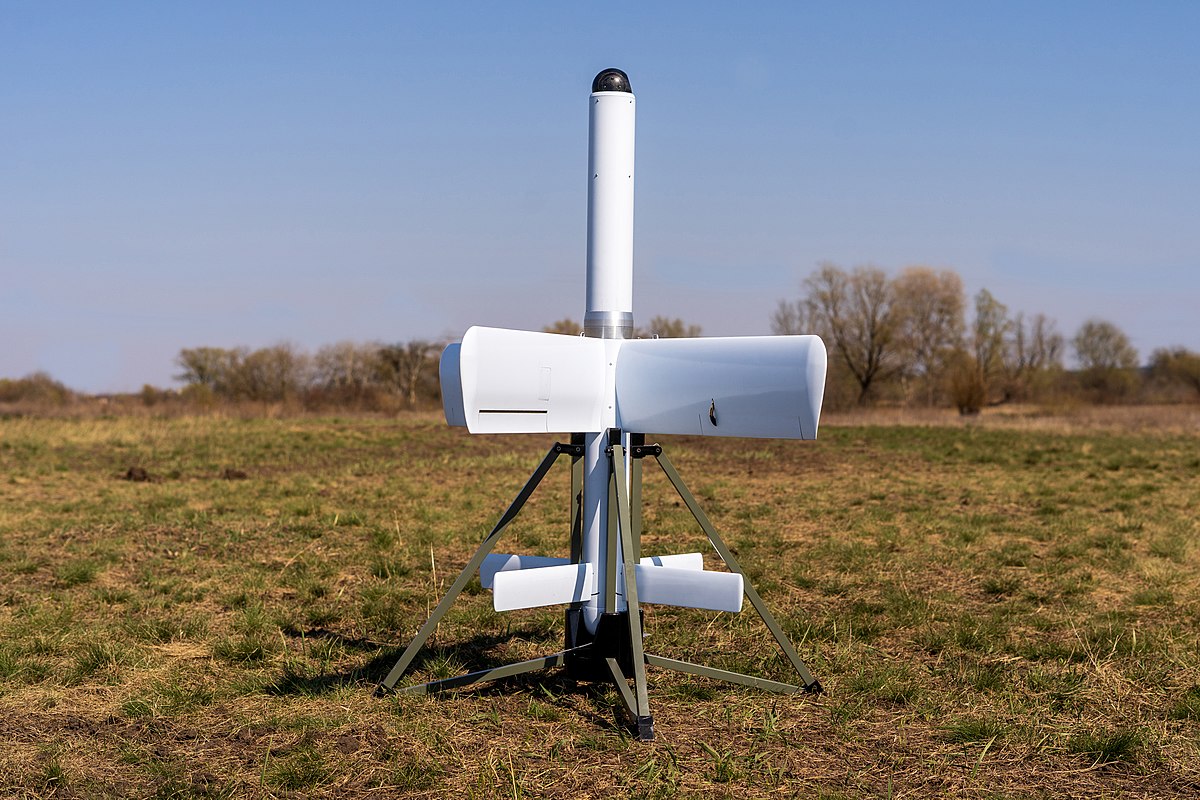Recently there was a buzz on social media that Ukraine is developing its long-range kamikaze drone to counter the Russian Geran-2 (Shahed-136), which is wreaking havoc in Ukraine by effortlessly and rather economically destroying Ukraine’s power generation capability. The Ukrainian drone is claimed to have a heavier warhead.
Ukrainian arms manufacturer Ukroboronprom reportedly revealed that the development of a kamikaze drone with a 1000-kilometer range and 75-kilogram warhead is almost complete.
There is no doubt the Ukrainian technical ability to put together such a drone in a quick time, keeping in mind that it could get all the help it needed in developing and manufacturing the drone from Turkey, the US, or any other NATO country.
Ukraine already has loitering ammo in its inventory, but loitering ammo is quite different from a kamikaze drone such as Geran-2.
Typically, loitering ammo has a short line-of-sight-dependent radius of action (20 to 30 kilometers when loitering at around a two-kilometer altitude). Also, loitering ammo has an optical (TV or IR) seeker that allows the operator to fly the ammo into the target with near-pinpoint accuracy.
Ukraine’s Silent Thunder
Ukraine’s ST-35 Silent Thunder loitering ammo was developed by Athlon Avia. It’s a 9.5-kilogram drone with a 3.5-kilogram warhead with a cruise speed between 120 kph and 140 kph and an operating range of 30 kilometers.
The loitering munition can be deployed in 15 to 20 minutes and remain airborne for up to 60 minutes.
ST-35 is precision-guided semi-automatically using television or infrared (IR) guidance heads which can be swapped depending on visibility and weather conditions. It can destroy a target with minimal risk of collateral damage.
The drone can destroy radar stations, command posts, and command and control platforms.
Loitering Ammo Vs. Geran-2
As stated earlier, the Geran-2 differs from loitering ammo with its longer (1,800 to 2,500 kilometers) range and lack of terminal guidance.

If you increase the range of a drone, you need to fit a satellite navigation (SATNAV) unit to enable it to reach its target. You can look upon a Geran-2 drone as long-range loitering ammunition or a slow-speed cruise missile.
To minimize production cost, Geran-2 flies autonomously and strikes its target at the coordinates loaded into it, obviating the need for operator guidance using SATCOM.
The Geran-2 has a role other than destroying a target, a role that is often overlooked. Being low observable (LO), Geran-2 can draw out and waste adversary air defense resources – missiles and anti-aircraft artillery! Considering the cost of even a short-range AD missile, it plays an important role. And going by the videos posted on SM, the Geran-2 is performing its secondary role with aplomb!

What Would A Ukrainian Long-Range Kamikaze Drone Achieve
The Geran-2 lacks terminal guidance and has a 40-kilogram warhead. It cannot pinpoint strikes against static or moving military targets such as tanks, guns, missile systems, radars, etc. A loitering drone like the ST-35 can do that! The Geran-2 is most effective when used against infrastructure targets.
So what would Ukraine do with a Geran-2-like drone? It could strike infrastructure targets in West Russia (erstwhile East Ukraine), but that would not affect Russian warfighting capability. Instead, it will only bring more pain to people whom Ukraine considers to be its citizens.
More importantly, Russia has honed its capability to defend against drones during its Syrian campaign and from the lessons, it has drawn from the Azerbaijan-Armenia conflict.
Russia uses short-range mobile AD systems, like Pantsir and Tor, to defend its high-value targets from all types of aerial threats. The systems have regular missiles to engage aircraft-sized targets (57E6 in the case of Pantsir & 9M330 in the case of Tor). They also have small-sized missiles specially developed to engage drones.
The Pantsir, for example, can also carry smaller Gvozd missiles with a range of 5-7 kilometers developed to counter smaller threats such as MLRS & mini UAVs. The Pantsir-SM can carry up to 48 Gvozd missiles instead of 12 57E6 missiles or a mix with the longer-range missiles.
Russian Success With Engaging Small Drones
Recently RuMoD published a video showing a Tor system that fired multiple missile salvos and destroyed several Ukrainian UAVs attempting to locate Russian troops in the Donbas region.
“About 15 drones were destroyed. Including the UAV ‘Valkyrie’ and ‘Fury,'” said the team leader.
Valkyrie is a tiny drone weighing 3.5 kilograms with a camera to spot the target. The drone can stay in the air for 120 minutes and has a range of 34 kilometers. The maximum speed of the drone is 108 km/h, and its service ceiling is two kilometers.
Fury, or BPAC A1-S/ A1-SM Furia, is a somewhat larger (5.5 kilograms) drone used for aerial reconnaissance day and night, determining the coordinates of the target and adjusting artillery fire. It has a range of 200 kilometers. The maximum speed of the drone is 130 kph, and the service ceiling is 2.5 kilometers.
Most likely, Ukraine will use its long-range kamikaze drone to strike at infrastructure targets deep within Russia, leveraging the 1000-kilometer range of its drone. How well the Ukrainian kamikaze drones fare against Russian Pantsir & Tor systems remains to be seen.
- Vijainder K Thakur is a retired IAF Jaguar pilot. He is also an author, software architect, entrepreneur, and military analyst.
- Reach out to the author at vkthakur (at) gmail.com
- Follow EurAsian Times on Google News




